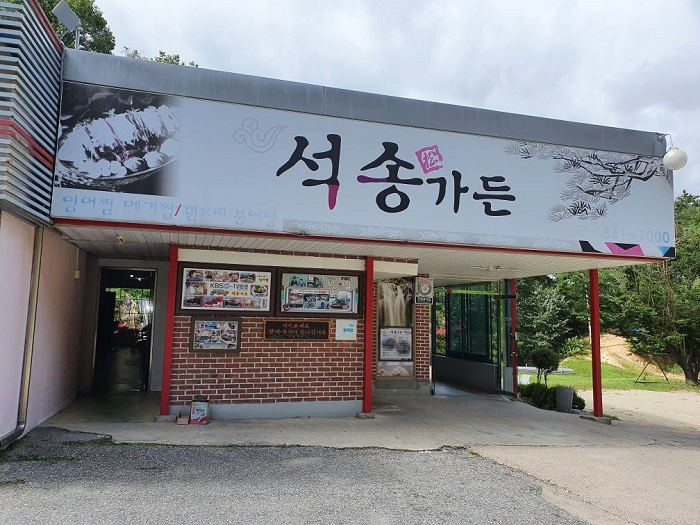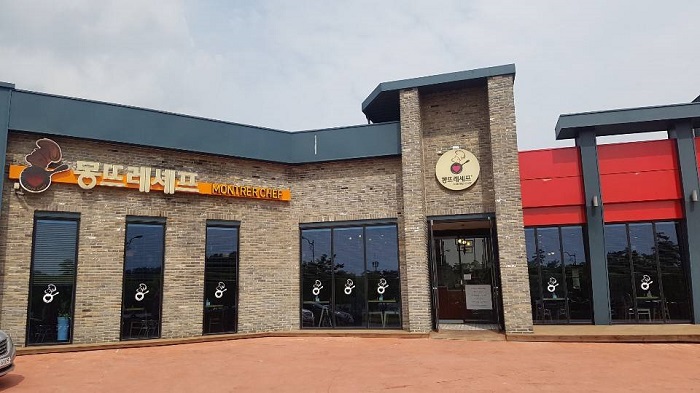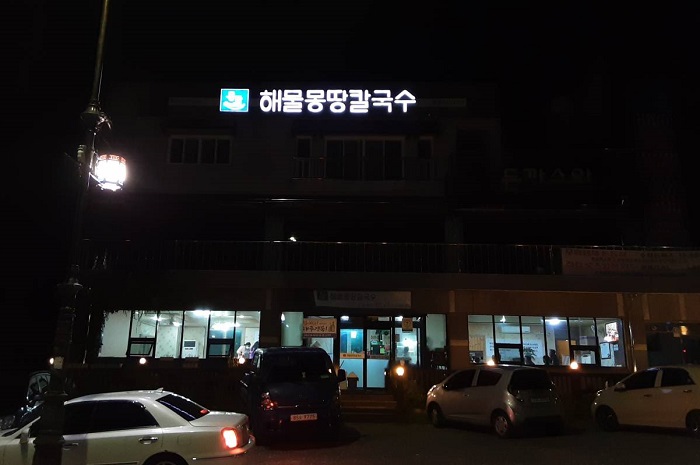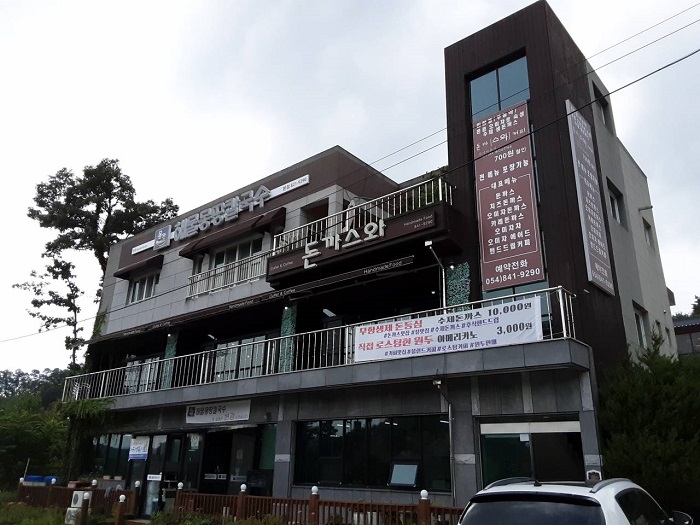Pont Woryeonggyo (월영교)
18.2Km 2024-10-25
Sanga-dong, Andong-si, Gyeongsangbuk-do
+82-54-821-0649
Le pont Woryeonggyo est un pont sur la rivière Nakdonggang. Au milieu du pont se trouve le pavillon Woryeongjeong qui permet aux promeneurs de profiter d’un moment paisible en appréciant la beauté de la nature qui l'entourent. Le pont a été créé pour rendre hommage à l'amour pur et émouvant d'un couple marié, Lee Eung-tae et sa femme, qui habitait dans cette région. Selon la légende, la femme a fabriqué une paire de mituri (sandales de paille) avec ses cheveux pour son défunt mari. En commémoration de leur amour, le pont a été conçu dans le style des mituri.
Seoksong Garden (석송가든)
18.3Km 2021-03-30
539-23, Jebiwon-ro, Andong-si, Gyeongsangbuk-do
+82-54-841-7000
A place with group seats and individual rooms, it is a restaurant well-known for its steamed carp with spicy sauce and bean sprouts. This Korean dishes restaurant is located in Andong-si, Gyeongsangbuk-do. The representative menu is braised carp.
Confucian Land (유교랜드)
18.4Km 2024-07-09
346-30, Gwangwangdanji-ro, Andong-si, Gyeongsangbuk-do
Confucian Land, situé à Andong, est un centre d'expositions et d'activités autour du confucianisme en Corée. Le centre permet de découvrir les enseignements de confucianistes historiques comme Toegye Yi Hwang et Yulgok Yi I, mais aussi de découvrir des instruments traditionnels comme le gayageum ou encore le haegeum.
MONTRER CHEF (몽뜨레셰프)
18.6Km 2021-03-30
346-124, Gwangwangdanji-ro, Andong-si, Gyeongsangbuk-do
+82-54-813-5454
It is a great place with an outdoor terrace for family gatherings. This family restaurant is located in Andong-si, Gyeongsangbuk-do. The most famous menu is pork shoulder steak.
Traditional Resort Gurume [Korea Quality] / 구름에 [한국관광 품질인증]
18.6Km 2023-04-13
190, Minsokchon-gil, Andong-si, Gyeongsangbuk-do
+82-54-823-9001
Gurume Resort is where early traditional Korean guesthouses are located. The traditional Korean houses were relocated to this place after a flood. The resort consists of seven traditional Korean houses named "Baksanjeong,” "Cheongongjeong,” "Gamdongjaesa,” "Palhoedangjaesa,” "Gyenam Old House,” "Seounjeong,” and "Chilgok Old House." Built in the 17th century, "Baksanjeong" is the oldest house there, and it has one guestroom. “Cheongongjeong,” “Gamdongjaesa,” and “Palhoejaesa” were built in the 18th century, whereas "Seounjeong,” "Gyenam Old House,” and "Chilgok Old House" were built in the 19th century. For this reason, the traditional Korean houses look slightly different from each other with one thing in common: they were all renovated and equipped with comfortable modern facilities while preserving most of the features of a traditional Korean house. All the guestrooms are furnished with bathroom with shower and air conditioning system. A hi-tech security system is also installed to ensure the safety of the guests. In addition to Gurume Resort, Happy Traditional Village also has a book café housed in a traditional Korean house as well as dining restaurant, experience rooms, and plaza, allowing the visitors to lodge and engage in a wide range of activities. There is a special package for staying at an old traditional Korean house and using the auxiliary facilities. For more information on various events and news, please visit the Happy Traditional Village website.
Zootopium (주토피움)
18.7Km 2024-07-09
346-95, Gwangwang Danji-ro, Andong-si, Gyeongsangbuk-do
Zootopium est le plus grand parc animalier dans le parc Gyeongsangbuk-do. Le parc constitue une parfaite destination notamment pour que les enfants puissent découvrir plus sur la nature et les organismes vivants. Le parc propose à la fois des sections intérieurs et extérieurs tout comme des restaurants et des zones de jeux.
Haemul Mongttang Kalguksu (해물몽땅칼국수)
18.8Km 2021-03-24
287, Gwangwangdanji-ro, Andong-si, Gyeongsangbuk-do
+82-54-821-9290
It is a place where you can eat Kalguksu (chopped noodle soup) made with abundant seafood. This Korean dishes restaurant is located in Andong-si, Gyeongsangbuk-do. The most famous menu is noodle soup with clams.
Donkkaseu Wa (돈까스와)
18.8Km 2021-06-25
287, Gwangwangdanji-ro, Andong-si, Gyeongsangbuk-do
+82-54-841-9290
This house offers homemade pork cutlet made from odor-free raw materials/refrigerated pork loin and formed into patties. This Korean dishes restaurant is located in Andong-si, Gyeongsangbuk-do. The most famous menu is pork cutlet.



![Traditional Resort Gurume [Korea Quality] / 구름에 [한국관광 품질인증]](http://tong.visitkorea.or.kr/cms/resource/56/2581156_image2_1.jpg)


 Français
Français
 한국어
한국어 English
English 日本語
日本語 中文(简体)
中文(简体) Deutsch
Deutsch Español
Español Русский
Русский